The ground trembled slightly beneath the feet of excavation workers on that crisp autumn morning. Not from volcanic activity—Vesuvius has been quiet for decades—but from the collective gasp of archaeologists as shovels struck something unexpected. Beneath layers of hardened ash and pumice that had entombed this section of Pompeii for nearly two millennia, a wall emerged. Not just any wall, but one adorned with pigments so vibrant, figures so detailed, and artistic techniques so advanced that it immediately challenged everything scholars thought they understood about the progression of Roman art.
This wasn’t supposed to be possible. Not here. Not from this period.
The discovery of what is now being called the “Villa of Impossible Pigments” represents more than just another beautiful home uncovered in the famous archaeological site. It represents a fundamental rewriting of art history—a moment when established academic timelines collapsed under the weight of contradictory evidence preserved perfectly by one of history’s most devastating natural disasters.
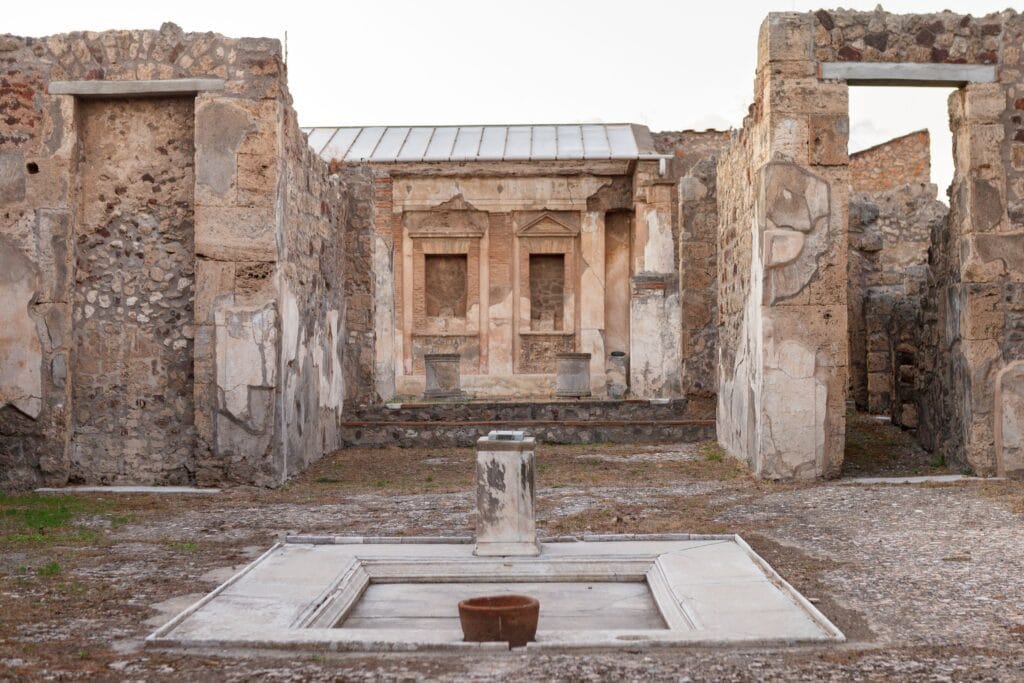
The Established Timeline That Just Crumbled
For generations, art historians and classical scholars have maintained a relatively settled understanding of Roman artistic development. The conventional wisdom divided Roman painting into four distinct stylistic periods, with techniques evolving in a linear progression over centuries. The sophistication found in certain color combinations, perspective techniques, and figurative representations were thought to have developed gradually—with certain innovations only emerging well after Pompeii’s destruction in 79 CE.
These assumptions formed the bedrock of Roman art history courses in universities worldwide. They influenced how museums organized their collections, how scholars dated newly discovered artifacts, and how we understood the cultural and artistic capabilities of ancient Romans during different periods. The timeline was neat, organized, and—as we now know—fundamentally flawed.
Before this discovery, experts believed that certain pigment combinations were technologically impossible for Roman artists of the first century. They were convinced that specific perspective techniques developed only during the late Imperial period. The understanding was that realistic portraiture with emotional depth emerged gradually over centuries of artistic experimentation.
“We’ve built entire academic careers around these assumptions,” says a prominent art historian who wished to remain anonymous. “The textbooks will need rewriting. The museum placards will need replacing. It’s humbling and exhilarating all at once.”
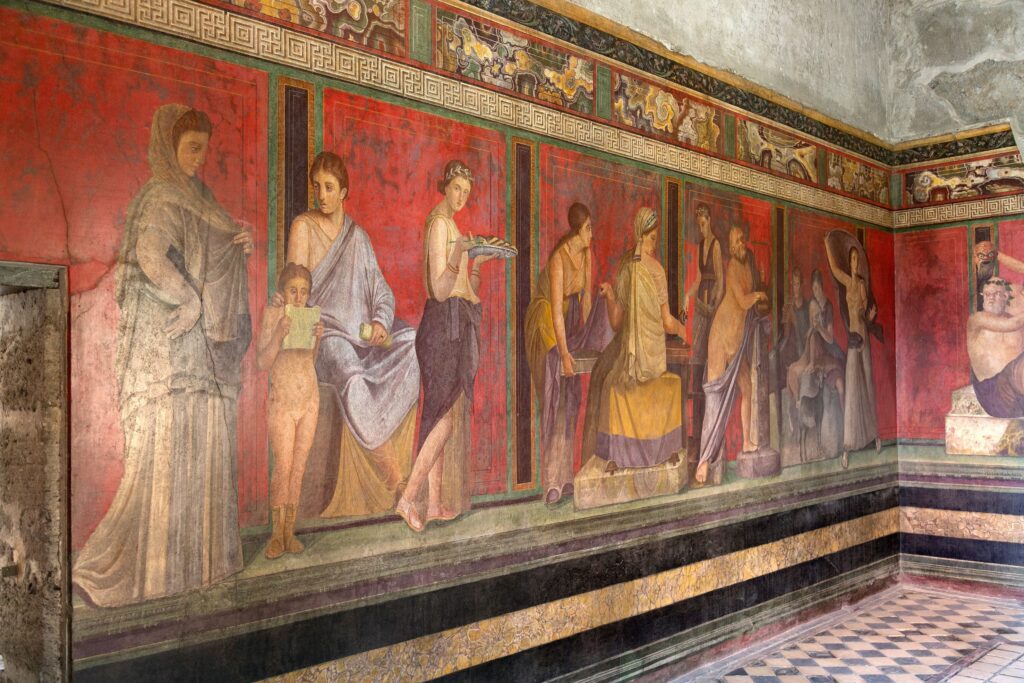
What Lies Beneath: The Extraordinary Villa
The villa itself spans what appears to be nearly 8,500 square feet of living space—modest by the standards of Pompeii’s wealthiest residents but substantial enough to suggest a family of considerable means. Its location in the northwestern sector of the archaeological park placed it in an area previously thought to contain primarily commercial structures and middle-class dwellings.
What makes this villa revolutionary isn’t its size or location, but what adorns its walls, ceilings, and floors. The preliminary excavation has revealed three rooms so far, each containing artistic elements that defy conventional understanding of Roman capabilities during this period.
The atrium features a ceiling with a celestial map so detailed it depicts star positions with mathematical precision that would have required astronomical knowledge previously thought unavailable to Romans of this era. The stars themselves are rendered in a pigment that maintains an opalescent quality even after centuries buried beneath volcanic ash—a technique previously believed to have emerged only in the Byzantine period, centuries later.
The triclinium (dining room) contains a continuous narrative frieze depicting what appears to be a philosophical symposium. But unlike typical Roman dining scenes, these figures are rendered with psychological depth—facial expressions so nuanced they convey complex emotions that art historians previously thought beyond the capabilities of first-century artists. The perspective work shows a sophisticated understanding of vanishing points and spatial relationships previously associated only with much later periods.
Most shocking of all is the cubiculum (bedroom), where the walls are adorned with portraits of what appears to be the villa’s inhabitants. These aren’t the stiff, formalized representations typical of the period. These are intimate, psychologically penetrating portraits that capture not just appearance but personality—a humanistic approach to portraiture that historians previously dated to the Renaissance, some fourteen centuries later.
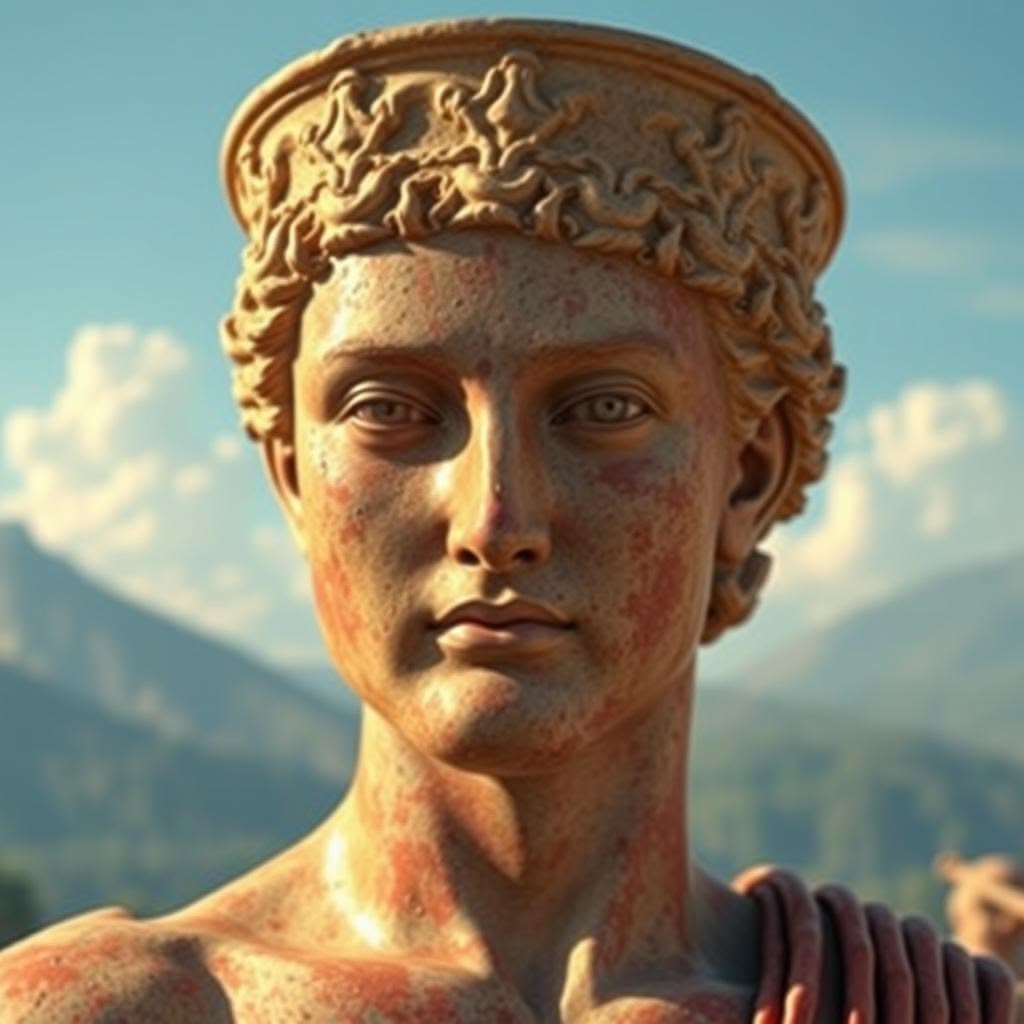
The Pigments That Shouldn’t Exist
Perhaps the most scientifically confounding aspect of the discovery involves the colors themselves. The villa’s walls shimmer with blues so intense they appear to glow in certain lights, reds that maintain their vibrancy despite centuries underground, and a particular shade of purple so rare that its formulation was thought lost to history until the 18th century.
“The blue pigment is particularly problematic for our established timeline,” explains a conservation specialist familiar with the discovery. “Its chemical composition suggests techniques we didn’t think were developed until at least the third century. Either this villa’s artists discovered the method independently and the knowledge was subsequently lost, or our entire dating system for pigment development needs reconsideration.”
The purple—historically associated with royalty and wealth due to the extraordinary difficulty of producing it from thousands of murex shellfish—appears in quantities that would have represented staggering wealth. More puzzling still, preliminary analysis suggests a formulation different from the standard Tyrian purple, with greater lightfastness and brilliance.
Most remarkably, the artists employed a binding technique that has preserved these colors with minimal fading—a preservation method that experts previously believed was developed only during the Renaissance. The binding agent appears to contain organic elements that enhanced color stability and protected against the degradation typically seen in ancient pigments.
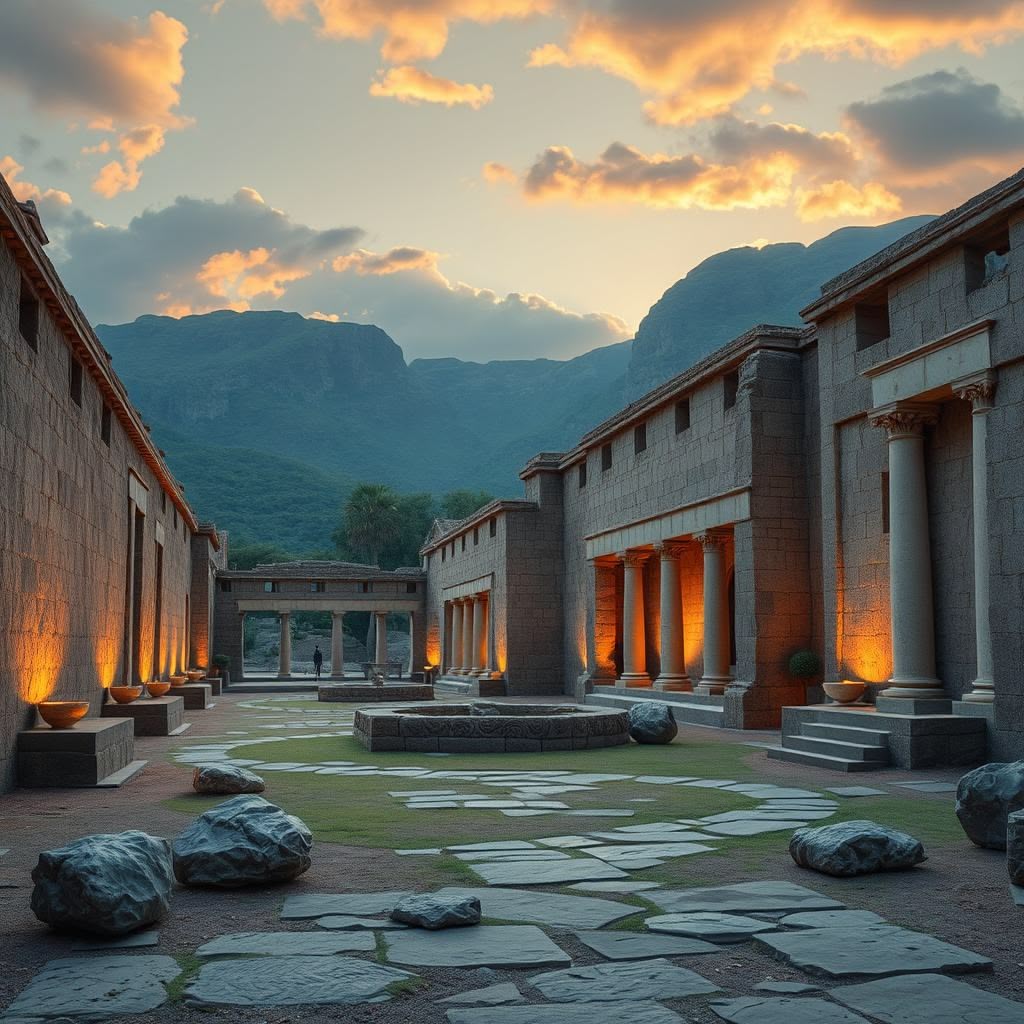
Artistic Techniques Centuries Ahead of Their Time
Beyond the revolutionary use of color, the artistic techniques displayed throughout the villa suggest capabilities far beyond what scholars attributed to first-century Roman painters. The most striking examples include:
The masterful use of chiaroscuro—the interplay of light and shadow to create the illusion of three-dimensionality—appears throughout the villa’s frescoes with a sophistication previously associated with Baroque artists like Caravaggio, who worked some 1,500 years later. In one particularly striking scene, a figure emerges from shadows with such dramatic lighting that it creates an almost photographic three-dimensionality.
The artists demonstrated an understanding of atmospheric perspective—the technique of showing distant objects as less distinct and more bluish—that art historians had previously attributed to 15th-century innovations. Landscapes visible through painted “windows” show mountains fading into distant haze with a scientific accuracy that shouldn’t have been possible according to the established timeline.
Most remarkably, several scenes display evidence of advanced understanding of human anatomy, including musculature and facial expressions that convey complex emotions. The precision suggests either direct anatomical study (thought rare in this period) or an artistic tradition with knowledge far more advanced than previously recognized.
“What we’re seeing here isn’t just a quantitative improvement on known techniques,” explains another art historian consulting on the project. “This represents a qualitative leap that forces us to reconsider not just when certain techniques developed, but how knowledge was shared or independently discovered throughout the ancient world.”
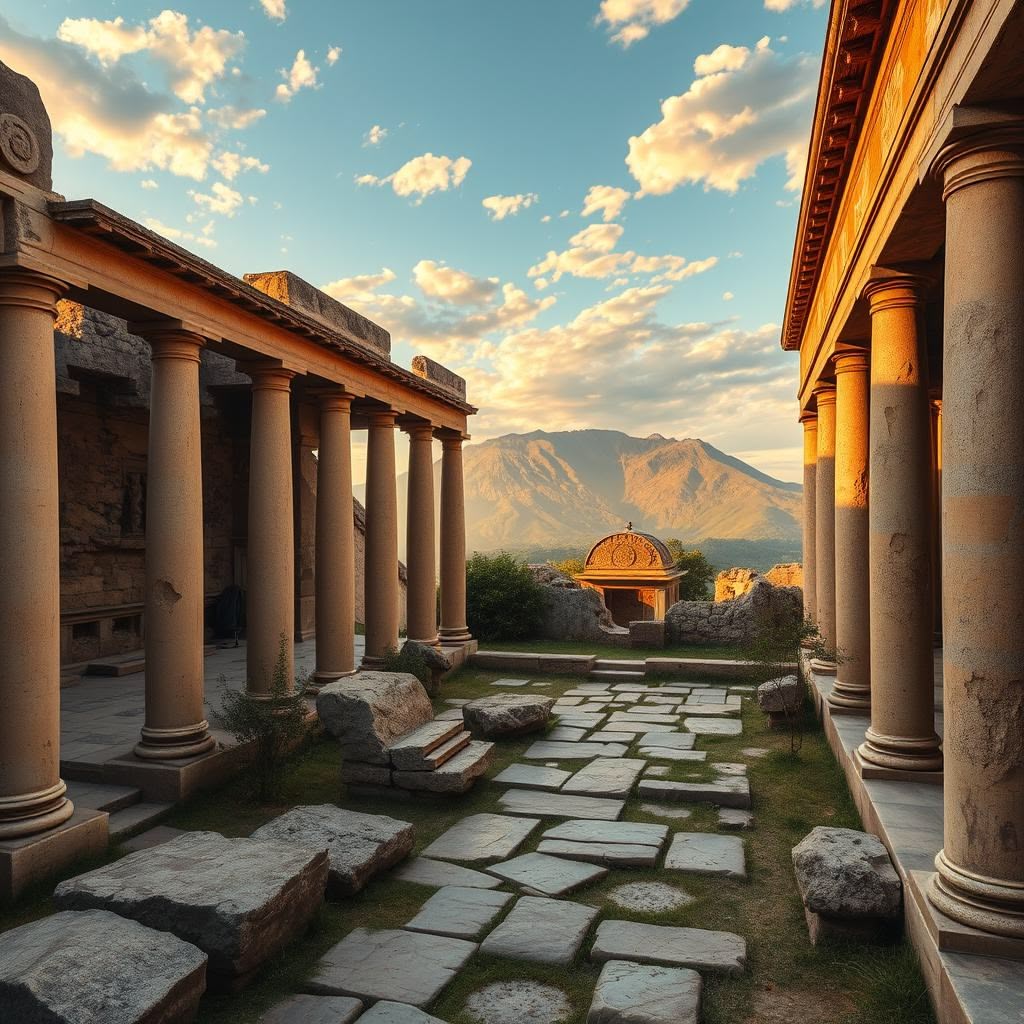
The Mysterious Villa Owners: Clues from the Art
While archaeological work continues to identify the villa’s owners through inscriptions and artifacts, the art itself provides tantalizing clues about who might have lived within these walls. The subject matter suggests a household of unusual intellectual breadth and possibly controversial philosophical leanings.
The symposium scene in the triclinium depicts what appears to be a philosophical debate with women actively participating—a progressive representation for the time. One central female figure is shown in the act of making a point, her gesture commanding attention from male counterparts who appear to be listening respectfully—a scene that challenges conventional understanding of gender dynamics in Roman intellectual circles.
Several scenes depict scientific instruments, astronomical observations, and what may be anatomical studies—suggesting a household engaged with natural philosophy and empirical observation. These subjects were not unknown in Roman art but rarely appeared with such prominence in domestic settings.
Intriguingly, some imagery suggests connections to mystery cults or philosophical traditions considered exotic or even controversial in first-century Roman society. Several symbols associated with Pythagoreanism and early mystical traditions appear subtly integrated into decorative elements, suggesting the villa’s owners may have held intellectual or religious views outside the mainstream.
“We’re likely looking at the home of someone not just wealthy, but intellectually adventurous—perhaps even dangerously so for their time,” suggests a classical historian consulting on the excavation. “The combination of scientific imagery, philosophical scenes, and potentially heterodox religious symbolism points to a household at the cutting edge of Roman intellectual life.”
Implications for Our Understanding of Ancient Innovation
The discovery forces a fundamental reconsideration of how innovation occurred in the ancient world. If these artistic techniques existed in 79 CE but don’t appear again in the archaeological record for centuries, what does that tell us about the transmission of knowledge and the potential for lost innovations?
One possibility is that the villa represents a singular pocket of artistic experimentation—perhaps supported by a particularly wealthy and forward-thinking patron—that was simply lost when Vesuvius erupted. This would suggest that history may be less linear than we imagine, with innovations appearing, disappearing, and being rediscovered rather than progressing in a straight line.
Another theory proposes that similar artistic developments may have existed elsewhere in the Roman world but haven’t survived or been discovered. The exceptional preservation conditions at Pompeii might be showing us what was actually more widespread but has been lost elsewhere to time and the elements.
Most provocatively, some scholars suggest this discovery might indicate contact with artistic traditions from other parts of the ancient world not previously thought to have influenced Roman techniques. The sophistication of certain elements has prompted speculation about possible artistic cross-pollination with eastern traditions from Persia, India, or even China through trade networks more extensive than previously recognized.
“What we’re confronting is the possibility that innovation in the ancient world wasn’t the linear, Western-centered progression we’ve constructed,” explains a classical archaeology professor from a major European university. “Perhaps knowledge flowed in networks more complex than our neat historical narratives have allowed for.”
The Fragility of Historical Certainty
Beyond the specific implications for art history, this discovery serves as a powerful reminder of how fragile our historical certainties really are. A single excavation has challenged decades of established scholarship, demonstrating how vulnerable our understanding of the past remains to new evidence.
This humbling reality extends beyond art history to all historical disciplines. How many other “established facts” about ancient civilizations might crumble with the next turn of an archaeologist’s trowel? The Pompeii villa reminds us that history is not a settled narrative but an ongoing investigation where new discoveries can overturn consensus at any moment.
For historians and archaeologists, this creates both excitement and anxiety. The thrill of new discoveries comes with the uncomfortable recognition that careers built on particular interpretations of the past may require substantial revision. The emotional and intellectual flexibility required is considerable.
“This is why we do this work,” says a senior archaeologist at the site. “Not to confirm what we already believe, but to be surprised—even shocked—by what the evidence tells us. The discomfort of having our theories challenged is ultimately what advances knowledge.”
The Implications for Modern Artistic Understanding
The discovery doesn’t just change how we understand ancient art—it potentially transforms how we view the relationship between ancient and modern artistic traditions. Many techniques long attributed to Renaissance masters may now need to be recognized as rediscoveries rather than innovations.
This reframing has profound implications for how we understand artistic genius and originality. If techniques we’ve attributed to revolutionary artistic minds like Leonardo da Vinci or Caravaggio were actually known to Roman artists fifteen centuries earlier, how does that change our conception of artistic progress?
For contemporary artists, the villa offers both inspiration and humility. The sophisticated techniques evident in these ancient works demonstrate that artistic “innovation” often involves rediscovering what was once known rather than creating something entirely new. This perspective offers a different relationship with artistic tradition—less about rejecting the past and more about engaging in a conversation across millennia.
“What strikes me most powerfully is how this discovery collapses time,” reflects a contemporary painter who visited the site. “Looking at those walls, I don’t feel separated from that artist by two thousand years. I feel them as a colleague who faced the same fundamental challenges I do—how to create depth, how to capture light, how to convey human emotion through pigment on a surface.”
Preservation Challenges and Ethical Questions
The excitement surrounding the discovery comes with urgent practical considerations. The very exposure that allows us to study these revolutionary artworks also places them at risk. The vibrant pigments that have survived for nearly two millennia in the oxygen-deprived environment beneath Vesuvius’s ash now face deterioration from exposure to air, light, humidity, and modern pollutants.
Conservation teams are working around the clock to document every centimeter of the exposed paintings using advanced photogrammetry and spectral imaging techniques. These digital preservations will allow for detailed study even if the physical artworks deteriorate. Meanwhile, environmental controls are being installed to stabilize conditions within the villa and slow any degradation.
The discovery also raises complex ethical questions about excavation itself. Each new section exposed to modern air begins a countdown to deterioration that can be slowed but not stopped. Some archaeologists advocate for leaving portions of Pompeii unexcavated, preserving them perfectly for future generations with more advanced conservation technologies.
“We face an impossible balance,” acknowledges the site’s conservation director. “Every decision to excavate is simultaneously an act of revelation and an act of potential destruction. We’re constantly asking ourselves: Is what we learn worth what we might lose?”
What Still Lies Beneath
As extraordinary as the villa’s discovery has been, it represents just a fraction of what likely remains buried beneath Pompeii’s volcanic shroud. Approximately one-third of the ancient city remains unexcavated—preserved in a state of perfect suspension since that August day in 79 CE when Vesuvius transformed from mountain to monster.
What other revolutionary discoveries might wait beneath those layers of hardened ash and pumice? What other historical certainties might crumble with the next discovery? The villa serves as a powerful reminder that Pompeii continues to hold secrets capable of transforming our understanding of the ancient world.
The ongoing excavation of the “Villa of Impossible Pigments” proceeds with methodical care, each new room revealing further challenges to established timelines. As work continues, archaeologists, art historians, chemists, and conservators collaborate in an extraordinary interdisciplinary effort to understand and preserve this revolutionary discovery.
For now, the villa stands as a humbling reminder of how much we still have to learn about the ancient world—and how easily our historical certainties can dissolve in the face of new evidence. The ground beneath Pompeii holds not just the remains of an ancient city, but the potential to repeatedly transform our understanding of human artistic achievement.
The question isn’t just what else we might find, but how many more times we’ll need to rewrite the books.

